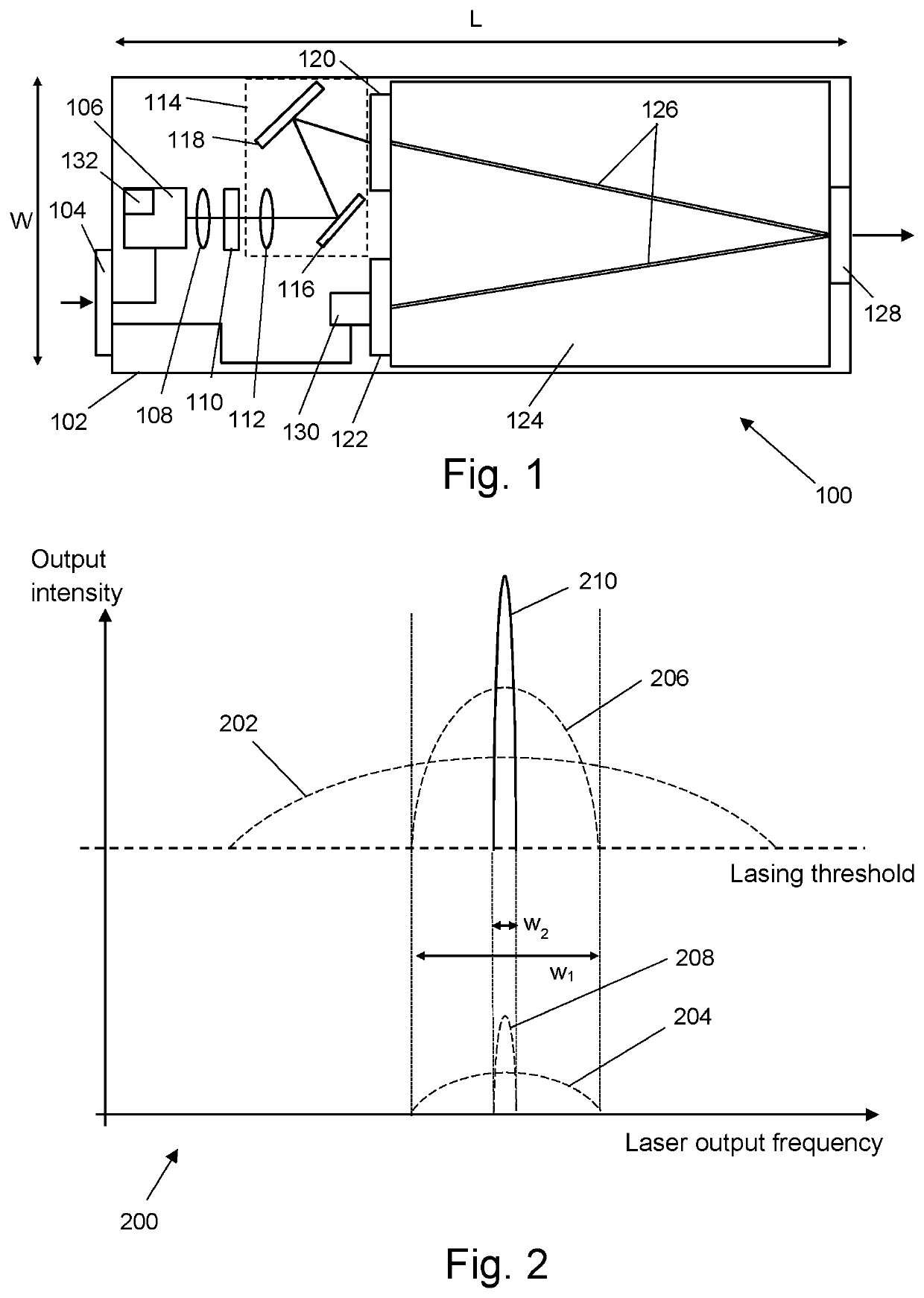Optical device
a technology of optical couplers and optical components, applied in the field of optical devices, can solve problems such as unbalanced optical couplers, and achieve the effect of minimising losses and maximising the effectiveness of feedback
- Summary
- Abstract
- Description
- Claims
- Application Information
AI Technical Summary
Benefits of technology
Problems solved by technology
Method used
Image
Examples
Embodiment Construction
; FURTHER OPTIONS AND PREFERENCES
[0032]The present invention relates to an optical device configured to output a narrow linewidth laser beam using an all-optical technique. The optical device may be provided in a compact package, in which the linewidth narrowing optics are provided or integrated on the same substrate as a laser source, such as a diode laser. FIG. 1 is a schematic plan view of a narrow linewidth laser optical source 100 that is an embodiment of the invention. The optical source 100 comprises a substrate 102, e.g. made from fused silica. Components of the optical source 100 are either mounted or integrally formed on the substrate 102, as explained below.
[0033]A laser 106 is mounted on the substrate 102. The laser 106 may be a laser diode, such as a distributed feedback (DFB) laser diode, although other types of laser may be used, in which the gain of the laser is spectrally wider than the feedback (seed) signal. The laser 106 can be an off-the-shelf component that is ...
PUM
| Property | Measurement | Unit |
|---|---|---|
| wavelength | aaaaa | aaaaa |
| size | aaaaa | aaaaa |
| reflectivity | aaaaa | aaaaa |
Abstract
Description
Claims
Application Information
 Login to View More
Login to View More - R&D
- Intellectual Property
- Life Sciences
- Materials
- Tech Scout
- Unparalleled Data Quality
- Higher Quality Content
- 60% Fewer Hallucinations
Browse by: Latest US Patents, China's latest patents, Technical Efficacy Thesaurus, Application Domain, Technology Topic, Popular Technical Reports.
© 2025 PatSnap. All rights reserved.Legal|Privacy policy|Modern Slavery Act Transparency Statement|Sitemap|About US| Contact US: help@patsnap.com

